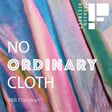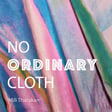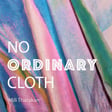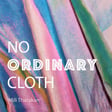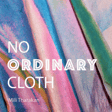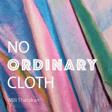
Ep 5. Indigo-Dyed Fabric Migration and Thinking Through Making with Mika Satomi
In this episode of The No Ordinary Cloth Podcast, we hear from Mika Satomi - an exceptional artist and maker whose artistic approach transcends mediums. She skilfully blends traditional and modern, digital and manual techniques and materials to convey powerful narratives. She is as proficient in weaving and crocheting as she is in programming and electronics and so many other techniques. Here she shares about her approach to learning new skills and deepening her existing ones.
She is known as a pioneer in the E-textiles community and most people would know her through Kobakant - How to get what you want - a resource for e-textile materials and techniques, that she and Hannah Perner-Wilson built. But Today, Mika joins us to discuss her latest project, Indigo Hyphae, a reflection on the topic of human migration. She explores traditional Japanese katazome techniques along with indigo dyeing techniques, going totally analogue this time, marking a shift from her usual e-textiles work.
Mika shares about her experience of teaching at art universities, her collaboration with Hannah Perner-Wilson, and their project Kobakant. She also touches on the role and responsibility we have as makers and the impact it has on the world. This discussion will leave you contemplative of your own practise and skills.
Join us as we explore the journey of this pioneering, deeply creative and thought provoking artist.
Mika Satomi's works
Zeug Farberai - Indigo dyeing studio
Kobakant - How to get what you want
Connect with Mili Tharakan
Insta: @noordinarycloth
Time stamp of episode:
- 00:19 Getting to Know Mika Satomi
- 05:17 Introduction to the Indigo Hyphae Project
- 07:31 The Concept and Inspiration Behind Indigo Hyphae
- 10:05 The Process and Techniques of Indigo Hyphae
- 20:26 Reflections on Craftsmanship and Skill Acquisition
- 34:43 Exploring E-Textiles
- 36:05 The Impact of Collaboration and Kobakant
- 43:40 The Responsibility of Designers
- 48:17 The Impact of Teaching on Personal Growth
- 01:02:14 Reflections on the Interview
